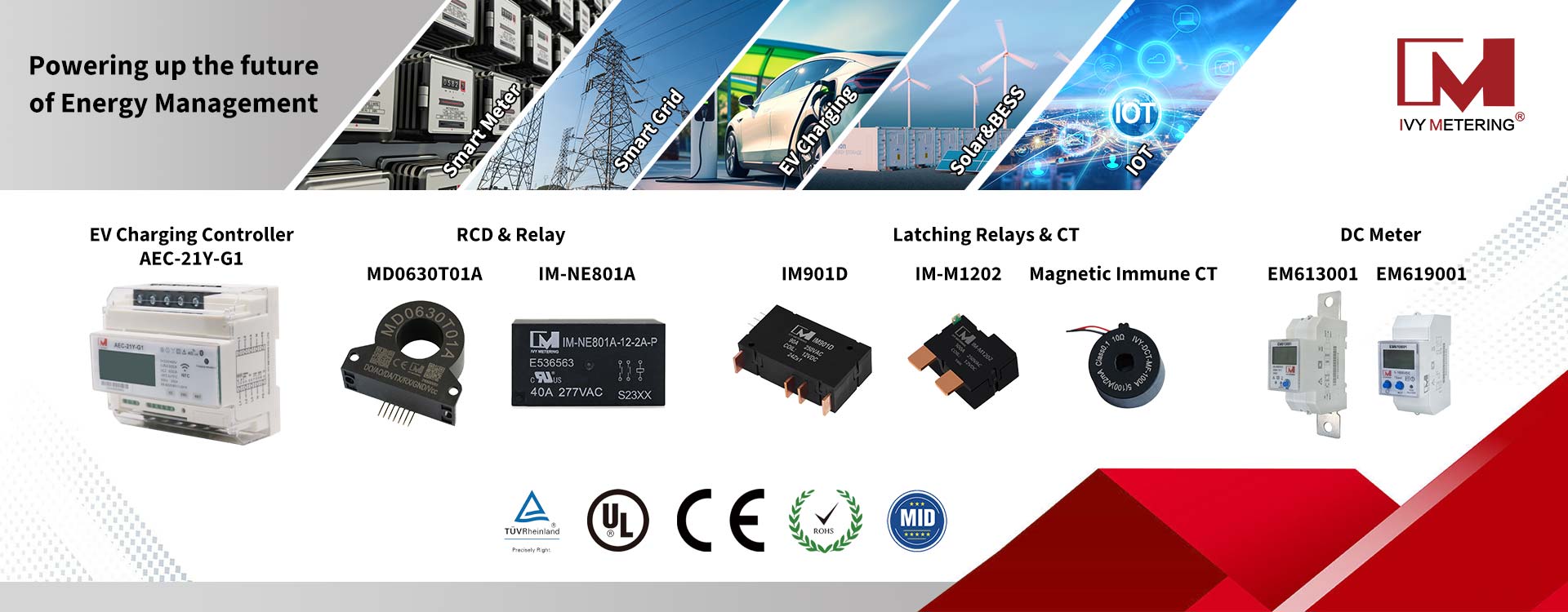Selection of RCD Leakage Protection Device for European Standard AC Charger
The well-known agency Transoprt&Enviromment estimates that starting from this year, it is estimated that by 2025, there will be 1.2 million public charging piles in stock in Europe, and by 2030, there will be 2.2 million charging piles in stock, and this is only the number of public charging piles. Different from the newly built and high-quality power grid system in China, the European power grid, such as the low-voltage power grid system, was built earlier and cannot be replaced in a short period of time. Therefore, AC charging piles are the main way to charge plug-in vehicles in Europe, and this way will continue and exist for a long time. Compared with DC charging piles, AC charging piles have obvious advantages. It is a cheap and convenient charging method that only needs a small upgrade to the power grid. Although DC charging piles charge fast, they mean larger costs and larger renovations. It is more suitable for long-distance stations, large-scale new public construction sites, etc.
The centralized explosive growth of AC charging piles in Europe has also sounded the alarm on the safety issues in the charging process. Leakage protection, as the core protection function, has been continuously upgraded and iterated in the standards of successive generations.
The iterative upgrade of European standard piles for leakage detection requirements
As we all know, the charging standard for electric vehicles is "IEC61851-ELECTRIC VEHICLE CONDUCTIVE CHARGING SYSTEM - Part 1: General requirements". The security specification does not mention the specific analysis and clear protection level of the system. Until 2017, with the release of the new version, there were substantial requirements for electric vehicle charging, and it was clarified under what circumstances the leakage current has the protection requirements for smooth DC residual current.
The protection requirements for residual current in the IEC61861-1-2017 (EN61861-1-2017) edition are:
Each AC connection point shall be individually protected by a residual current device (RCD). The RCD protecting each connection point shall at least meet the requirements of a type A RCD, and its rated residual operating current shall not exceed 30 mA. When EV charging piles contain IEC 62196-compliant sockets or vehicle connectors, additional protection against smooth DC fault currents is required. Its leakage current protection should at least be: Type B or Type A and be able to separate when it detects a current exceeding smooth DC 6mA/DC. The concept of RDC-DD devices for smooth DC leakage protection is introduced for the first time in this standard.
Since the promulgation of the IEC61851-2017 standard, places including the UK (BS7671:2018), New Zealand (AS/NZS 3000:2018) and other places took the lead in implementing the new standard in 2019, and its mode 3 charging piles must be equipped with smooth DC leakage detection The functional leakage protection module benefits from the mature application of Type B leakage protection in photovoltaics, elevators and other fields, and there was no suitable RDC-DD adaptation at that time. Although the price of B-type leakage protection is slightly expensive, it is still the first choice for many pile companies or users to improve their own electricity safety and meet safety regulations. The time has come to 2021, which is this year. The EN standard stipulates that all EU countries covered by the standard must comply with the IEC6185 standard. This means that more pile enterprises or users who originally chose the TypeA leakage protection scheme will have to add a smooth DC leakage protection mechanism starting this year. The increase in the market is forcing the price of the expensive Type B leakage protection solution to gradually decrease, and new solution ideas are also born.
The selection of the market finally settled on two mainstream solutions:
(1) Type B leakage protection scheme
(2) AC/DC Sensor solution
The first method is the wall-box solution led by Tesla. The device itself does not have a smooth DC leakage detection. In the case of upgrading the European standard IEC61851 safety regulations, there is no corresponding upgrade and integrated AC/DC Sensor inside the fuselage, which means Under the mandatory requirements of safety regulations, European users must hold Type B leakage insurance, and your electrician will complete the construction of charging piles for you and connect them to the grid. Of course, the distinguished Tesla owners in 19 years were also shocked by the expensive Type B missing warranty price while complying with the regulations.
The second way is an integrated solution with relatively low price and cost. Since the national energy standard has not been upgraded, this solution is widely used in export charging piles and domestic high-end car brands. Its features are also very prominent, using the characteristics of AC/DC Sensor to detect AC and DC, and cooperate with the operation control of relay and MCU to complete the protection of the entire leakage current. The core is the detection and processing of AC/DC Sensor.
If you need type B rcd or AC/DC sensor for leakage protection in EV charging, welcome to visit www.ivy-metering.com for more information.












